


Brothers Manoj Kumar and Sumit Kamboj turn farm ownership dream into reality. PAGE 5

















Brothers Manoj Kumar and Sumit Kamboj turn farm ownership dream into reality. PAGE 5













PETER BURKE peterb@ruralnews.co.nz
UNNECESSARY BOX ticking and red tape are set to go under the Government’s new RMA reforms –much to the delight of farmers.
Under the reforms just released, the existing RMA will be replaced by two separate acts – one dealing with planning and the other on the natural environment.
Key issues for farmers relate to property rights, starting with the presumption that land use is to be ‘enabled’, meaning unless there is a significant impact on others or the national environment, there is no barrier.
The other major reform of note is that regional councils will no longer individually be able set rules as in the past and one national set of standards will apply over such matters as freshwater, biodiversity and coastal policy. What’s more, environmental limits will now be centrally controlled.
The overall emphasis is on ‘national standards’ rather than the higgledy-piggledy regional approach. To top it off a new national compliance regulator with a regional presence will be established. The big losers in the changes are regional councils.
The reforms are being welcomed by Federated Farmers RMA reform spokesperson Mark Hooper who says farmers are spending way too much time and money on costly resource consents and processes that are holding up investment in things like new water storage and rural infrastructure.
He says the Government has
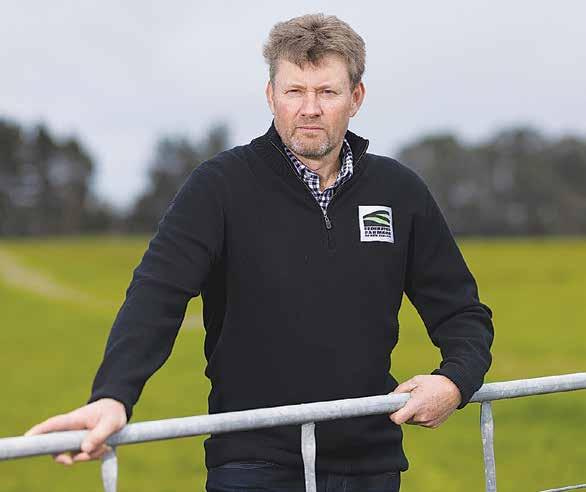
delivered a pragmatic and commonsense plan that will put respect for property rights front and centre. He adds this means that, unless farmers are doing something that will have a negative impact outside their property’s boundary, they can essentially do what they want on their own land.
Hooper says the new laws will mean that, where a council takes a property right away, the council will have to pay compensation for the loss of property value.
“Federated Farmers has always pushed back on councils’ overzealous use of overlays like Outstanding
Natural Landscapes (ONLs), Significant Natural Areas (SNAs), or Sites and Areas of Significance to Māori (SASMs). We’re talking about little details like what colour their shed can be and needing a resource consent to put in a new fence, through to bigger hurdles such as being unable to develop or convert their land,” he says.
Hooper says Feds also welcomes the shift to national standards, while noting the Freshwater Farm Plan system is the ready-to-go standard for farming. He says it has never made sense for farmers to be farming by resource consent.
“Resource consents are a costly, time-consuming and bureaucratic way to improve farming practice. At the same time, caution needs to be exercised in trying to standardise farming too much, as every farm, catchment and community is different,” he says.
Hooper says the Freshwater Farm Plan model, introduced by the previous government and amended by the current, is a tool that can replace the need for a resource consent. He says it’s a ready-to-go standard for farming with huge buy in from farmers, sector groups, and regional councils.

A MARKED turnaround in the financial performance of Canterbury milk company Synlait has halted a threatening exodus of farmer suppliers.
Synlait last week announced its half-year result for the six months to the end of January, with earnings before interest, taxes, depreciation, and amortisation (EBITDA) up 217% at $63.1 million, and net profit after tax (NPAT) up 105% to $4.8 million, compared with the same period to January 2024.
Net debt was $391.9 million, down 29%, revenue was $916.8 million, up 16%, and gross profit was $87.0 million, up 99%.
PROMINENT MID -Canterbury dairy man Willy Leferink welcomed the result.
He said the A2 and Bright Dairy capital injection halved the company’s interest bill and the company also had a number of other things “go their way.”
“On top of that, I think they really started to focus on what was really important to Synlait.”
Leferink was among the farmers who had advised Synlait that he would leave but had already lifted his cease notice.
“I already knew that it was going a lot better.
“There was a number of people that were looking for a good half year results to return their cease notices.”
Leferink was now confident for the future “if they stay on the straight and narrow”.
“I’m grateful that it turned around, and I had every option to walk away because I own a lot of shares in Fonterra. But I have faith in the current team, and the field team are doing an awesome job.”

followed last year’s equity raise through issuing extra shares to major shareholders Bright Dairy and a2 Milk Company. Bright chipped in $185m to increase its stake to 65% and a2’s $32.8m injection maintained its 19.8% stake – while diluting minority investors’ overall stake.
Fergusson said the equity was not the key to the turnaround, but it gave certainty to Synlait’s various stakeholders.
Having revealed last year that a majority of its South Island farmer suppliers had advised an intention to stop supplying milk to the company, Synlait says that is now not the case, with many withdrawing their cease notices.
“This is a significant improvement in the company’s position from six months ago,” Synlait said in its announcement to the NZ Stock Exchange.
“The reversal of ceases continues to gain momentum. Given the company’s return to profitability, as released in today’s results, it is
expected the number of withdrawals will increase further ahead of 31 March 2025, which is the final date for farmers to remove their cease if they wish to access all the new, secured milk premiums.”
The forecast base milk price for the 2024-25 season is $10/kgMS with additional premium payments available to sup-
pliers without a cease notice, taking the total forecast average milk payment for Synlait suppliers to $10.48/kgMS.
In its guidance statement for the second half year Synlait said it expects a slowing as it balances opportunities and risks related to milk stream returns and foreign exchange.
But it says interest from potential new farmer suppliers has exceeded expectations
and it expects to recruit new farmer suppliers in the coming seasons based on the strength of its onfarm offering.
Speaking a day after the result announcement and with a week to go to the March 31 deadline, Charles Fergusson, Synlait’s director of on-farm excellence, sustainability and corporate affairs, would not put a figure on the number of cease notices but told Dairy News that it was now in a
minority of suppliers and getting smaller every day.
“I have had phone calls from two large multi-farming groups yesterday advising that they would be pulling their ceases this week.
“We’ve had good momentum since the start of February and we’re expecting a pretty big week because a lot of farmers had linked their decision to the publishing of this result.”
The announcement
“We identified quite a long time ago that we had performance challenges coming and we started focusing on those well over a year ago and we’re starting to see the benefit of that come through now.”
Monthly financial performance is driven by the business growing volume and customers, new products, and keeping control of costs.
The equity raise “just provided certainty for us to accelerate our turnaround rather than driving it,” he said.
LAST SEASON has been a mixed bag for Waikato contractors, with early planted forage maize, planted on the dry soils around Cambridge, doing badly after germination and failing to meet potential, says Jeremy Rothery, Jackson Contracting.
By contrast, later-sown crops
established on the peatland moving eastwards towards Morrinsville and north towards Taupiri have fared a lot better, with a crop harvested last week averaging 26 tonnes DM/ha.
Having started maize harvesting on Feb 26th, Rothery says, “we’ve really had a dream run, with harvesters, trucks and trailers travelling well over the very dry ground, so much so that we will be putting the machines away by the 1st April”.
There were worries over large clamps of silage and huge stocks of baleage, with very little demand.
Rothery notes that this season “has been the opposite, with stocks disappearing quickly and us having to turn potential customers away”.
“This is leading to what I’d predict to be a potential feed shortage that is getting farmers worried as we move into winter. Already we are hearing stories of bales being trucked up from
the Manawatu and farmers locking to sign contracts for maize and grass supply next year.”
Rothery predicts that re-seeding equipment is poised for a busy time, but as yet, is being delayed by the rock-hard ground. Further south at Mangakino, in the South Waikato and to the west of Lake Taupo, farmer and contractor Phillip Parry notes that the season has, and continues to be very dry, with reduced crop yields and

some de-stocking. Re-seeding is at a standstill, with very dry hard ground and a very real risk of non-germination, without substantial rain.
“It appears that we are seeing more dry seasons, but I worry that many farmers seem to be poor planners when it comes to handling the issue. In most years, we always plant an area of break crops such as swedes and turnips that provide feed after an extended dry spell,” says Parry.


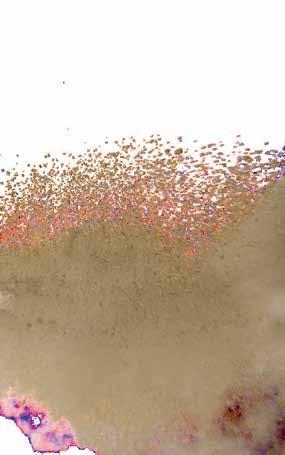
DAIRY FARMING sib-
lings Manoj Kumar and Sumit Kamboj’s message to other immigrants is simple – work hard and you will be rewarded.
Kumar and Kamboj, who created history four years ago by taking out NZ Dairy Industry Award’s Share Farmer of the Year title, became proud owners of their first farm three months ago.
The farm ownership –a milestone for the brothers from Uttarakhand state in Northern India –caps off 14 years of hard work, dedication and learning.
They take ownership of the 346ha farm in Leeston, Mid-Canterbury from June 1, bought in a 50% partnership with Richard and Chrisse Wright. Kumar and Kamboj are currently sharemilkers of the Wright’s 530ha, 2100-cow farm.
Kamboj told Dairy News that they are excited to finally call a farm their own.
“It’s 347ha milking 1200 cows with seven staff. Between the two farms we will be running a team of 20 staff and milking 3300 cows,” he says.
“It feels like a dream come true.”
Kamboj says the journey has been challenging but a rewarding one.
“It took us 14 years to buy the farm, and it has been an incredible experience, both rewarding and challenging, but we have enjoyed every moment of it.”
The brothers began their journey in the NZ dairy industry with a contract milking job in Pahiatua, spending four seasons on a 320-cow farm. This was followed by 50-50 sharemilking stints and contract milking with two other farmers.
Kamboj says winning the Share Farmer of the Year title opened new opportunities including
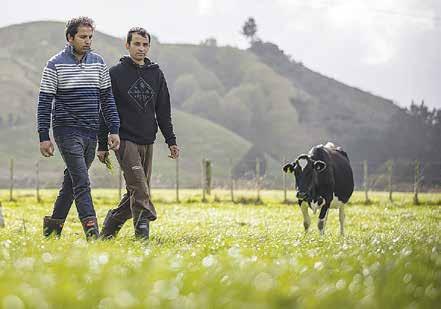
NEW ZEALAND Dairy Industry Awards
chief executive Robin Congdon is praising Manoj Kumar and Sumit Kamboj for their hard work and progression through the industry.
Congdon told Dairy News that the purpose of the awards is to support entrants in learning, connecting with industry leaders, and growing their careers and businesses.
“Full credit goes to Sumit and Manoj for their hard work and dedication in progressing through the industry, but we’re proud to have played a part in their journey.
“Their success is a testament to what can be achieved through commitment, education, and the right support network.” Congdon says migrant workers play a crucial role in the success and sustainability of the dairy industry.
“The NZDIA programme provides them with knowledge, encouragement, and recognition, helping them establish themselves, build confidence, and take the next steps in their careers.
“It’s incredibly rewarding to see so many talented individuals progress through the industry with the support of the awards.”
While the awards enjoy good levels of participation from migrant dairy workers, there is always room for more.
Congdon points out that the awards are designed to be inclusive and provide a platform for all dairy farmers to showcase their skills, gain valuable feedback, and connect with people in the industry can help them advance.
He would like to see more migrant dairy farmers throwing their hats in the ring for the awards.
Increased participation enhances the vibrancy of the programme and helps attract sponsors and partners, ensuring they can continue supporting dairy farmers at all levels.
“We hope that stories like Sumit and Manoj’s will inspire more migrant dairy farmers to enter and take advantage of the opportunities the awards provide.”
the Wrights.
Congdon told Dairy News that the purpose of the awards is to support entrants in learning, connecting with industry leaders, and growing their careers and businesses.
“Full credit goes to Sumit and Manoj for their hard work and dedication in progressing through the industry, but we’re proud to have played a part in their journey.
“Their success is a testament to what can be achieved through commitment, education, and the right support network.”
Congdon says migrant workers play a crucial role in the success and sustainability of the dairy industry.
“The NZDIA programme provides them with knowledge, encouragement, and recognition, helping them establish themselves, build confidence, and take the next steps in their careers.
“It’s incredibly rewarding to see so many talented individuals progress through the industry with the support of the awards.”
While the awards enjoy good levels of participation from migrant dairy workers, there is always room for more.
Congdon points out that the awards are designed to be inclusive and provide a platform for all dairy farmers to showcase their skills, gain valuable feedback, and connect with people in the industry can help them advance. He would like to see more migrant dairy farmers throwing their hats in the ring for the awards.
Increased participation enhances the vibrancy of the programme and helps attract sponsors and partners, ensuring they can continue supporting dairy farmers at all levels.
“We hope that stories like Sumit and Manoj’s will inspire more migrant dairy farmers to enter and take advantage of the opportunities the awards provide.”
He says the NZ dairy industry has a lot to offer for hard working young people – be it locals or migrants.
His advice to young people eyeing a career in dairying is to give it a go.
“We know it will be challenging in the early days, but it has a lot to offer back. Great opportunities are available if you are ready to work hard and it will be rewarded.
“Network with other workers and attend farm field days to make more connections with the farmers.
“Enter dairy industry awards to challenge and benchmark yourself against others.”
Kamboj says their success is also due to the support they have received along the way from farmers.
AS MIGRANTS, Manoj Kumar and Sumit Kamboj say the early days in the dairy industry were hard.
Leaving their family and friends behind in Uttarakhand was “very emotional”.
Kamboj recalls that they didn’t have too many connections and mentors in those early days.
The brothers haven’t forgotten their roots in Uttarakhand, where they have become role models for dairy farmers.
They have also hosted delegations from India including a delegation from leading Indian dairy player Amul in April 2023 and officials from the Uttarakhand government in December 2023 and India’s National Dairy Development Board last year.
“We have learnt a lot from the NZ dairy industry, and we would like to share our experience with farmers back home in India,” says Kamboj.
In February this year, the brothers were part of a delegation from the NZ Ministry for Primary Industries (MPI) and Massey University to their family farm in Uttarakhand.
“We are just trying to support small holder dairy farmers with our knowledge and experience and currently we are working on hosting a small-holders dairy farmer delegation from India to New Zealand to give them an exposure of our great dairy farming industry.”
He thanked Richard and Chrisse Wright for giving them the opportunity to work as business partners. Kamboj also mentioned former employers, Geoff and Ester Arends and Andrew and Monika Arbuthnott, for having put their faith in them during the early part of their dairy career.
Kamboj says they also owe a lot to their staff.
“We are very proud of our team as we won’t be able to achieve this goal without their hard work,” he says.




PETER BURKE
A LEADING farm consultant says it’s likely the dairy season in the Waikato will come to a premature end because of the drought.
James Allen, Ag First, is predicting the season may end three to four weeks earlier than normal as the situation gets tight for dairy farmers in that region.
He says while most of the region had about 20mm of rain recently, which was very welcome, it certainly wasn’t enough to be a drought breaker. He says although more rain is expected, that will not change the situation much.
“There isn’t much feed at all and it’s still dry. What is keeping farmers going is that maize
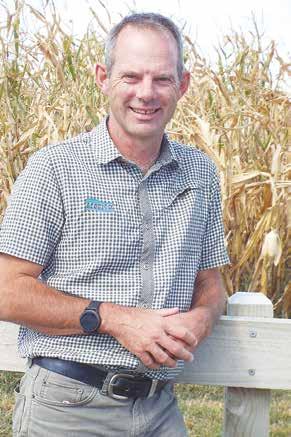
crops are pretty good with some quite good yields coming off. Any spare maize that wasn’t
contracted has now been taken,” he says.
Allen says around central and south Waikato
it’s very dry but in the hill towards Te Aroha some farmers report that they have 80mm of rain.
“But only a few pockets of the region have got lucky,” he says.
Allen says dairy farmers in the region are generally coping pretty well compared to previous droughts as they are resilient and are just getting on with it. He says this
is because the payout is high and they have had a lot of supplement on hand – prices for which have held and not gone crazy.
Allen says crunch time is looming and decisions on the culling of cows and drying off will be made from now on. He says people have been poking a lot of supplement into their cows and
kept on milking but says the maths on this are really not working now.
“It’s about focusing on next season so protecting pastures and cow condition is now the priority,” he says.
Allen says farmers should be turning their minds to 2026 and working out the amount of supplement and pasture covers they have and set targets for the next season.
For dairy farmers generally in the main north island regions of Northland, Waikato and Taranaki the drought has taken its toll with the extreme dry weather. But Allen says down in Canterbury they are having an amazing season and he says Southland has also recovered well.
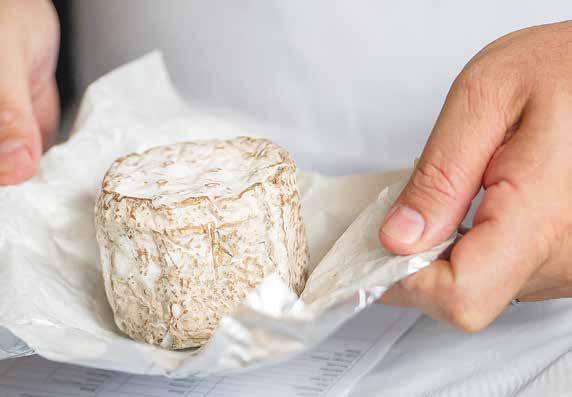

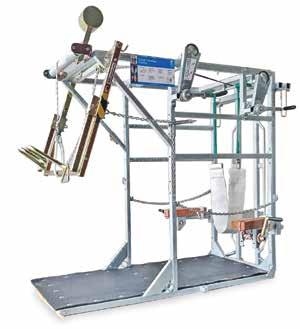
AFTER TASTING 240 New Zealand made cheeses, judges have bestowed medals upon 199 of the entries.
The judging for the New Zealand Champions of Cheese Awards 2025 finished with 65 gold medals, 83 silver medals and 51 bronze medals for local cheesemakers.
The highest scoring gold medal cheeses are in contention to be named as Champions at the NZ Champions of Cheese Awards 2025 Gala Dinner in Hamilton next month.
The awards, managed by the New Zealand Specialist Cheesemakers Association, highlighted exceptional quality and innovation in the local cheese industry. Assessment was conducted at Hamilton’s WINTEC in early March with master judge Jason Tarrant guiding 30 judges, supported by 20 stewards.
Tarrant notes that it was pleasing to see a nearly 10% increase in total entries over the previous year, with a significant 50% lift in the number of flavoured cheeses entered for assessment and double the number in the blue cheese, export cheese and Greek or Danish-style cheese categories.
Tarrant says their taste buds were thrilled by “outstanding blue
cheese, adventurous flavour-added entries that complemented the cheese while offering a real point of difference for consumers”.
“All of which was in sharp contrast to the delicate and decadent fresh Italian-style cheese that melted in the mouth and also captured the attention of judges,” he says.
For example, in the dish Champion Fresh Italian-Style Cheese category, Anabelle Exquisite Dairy Bouchees Black Garlic and Truffle received a gold medal with judges commenting, “Lovely fresh, smooth cheese. Uniform and consistent sizing…. good balance of flavours. Presence of black garlic and truffle harmonise nicely. Great cheese”.
In the FSQSNZ Champion Aged Flavour Added Cheese category, Jones Family Farm Peppered Havarti received a gold medal. with judges saying, “Excellent cheese! Excellent flavour! Beautifully presented! Cheese flavour and body well balanced. Pepper was the perfect addition”.
Awarding Kāpiti Artisan Bridge Street Blue a gold medal in the Ecolab Champion Blue Cheese category, the judges’ said, “Rustic external cheese (positively). Well broken down interior, interior decadent… inside was awesome. Some
firmness, some creamy ‘oozy’ texture which was great… a good cheese. Well done.”
The NZSCA says Kiwi cheese lovers will find these and other medal winners at their local supermarket and specialty retailer.
NZSCA chair, Simon Lamb, says consumers will know the medalwinning cheeses because they will wear NZ Champions of Cheese gold, silver and bronze medals.
“Its consumers guarantee the cheese is made in NZ and it’s been assessed by experts who affirm it’s of the highest quality. Buying NZ cheese helps maintain jobs and income for NZ businesses.”
Lamb thanked the awards sponsors and all the volunteer judges and stewards whose expertise made the awards possible. “Without the voluntary contributions of judges and stewards who donate their Sunday to help find NZ’s best cheeses, the NZ Champions of Cheese Awards wouldn’t be possible.”
The NZ Champions of Cheese Awards are in their 22nd year of recognising the country’s finest cheeses and shining a light on the best examples to guide consumers on purchase decisions with trophies and medals awarded to outstanding NZ Cheese.
IN your people and in your own leadership skills is the path to success for a farming business, says economist Shamubeel Eaqub.
Farmers need to ask what they can do to give their workers better skills, better pay, better working conditions, and a better lifestyle, so they want to work on that farm and not somewhere else.
Eaqub was speaking at the People Expo 2025 event in Ashburton, organised by the Dairy Women’s Network and DairyNZ.
Churn and recruitment can be expensive; retention is relatively cheaper, he says.
But farmers needed to concentrate a lot more
on personal attributes, rather than pre-existing skills when hiring. Qualifications were necessary but not sufficient.
“The most effective ways to upskill somebody is on-the-job training, followed by in-house training, followed by mentoring, and they’re well ahead of those professional training and formal training events,” Eaqub says.
“Don’t forget how much you can do in your own business, to upskill your people.
“You have enormous amount of control: you have an enormous amount of influence - you being a good leader, you being a good trainer, can deliver you more benefits than what can happen outside.”
Eaqub says it was about recruiting and upskilling for success but
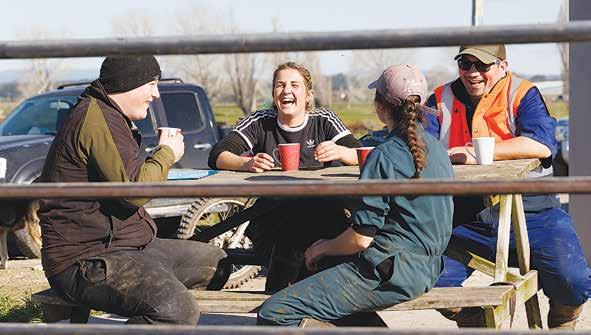
that only really happens in businesses with good leadership, good management and good culture.
“I know they sound like soft skills, but they are critical skills. Investing in yourself, in your own leadership, your own management skills, build-
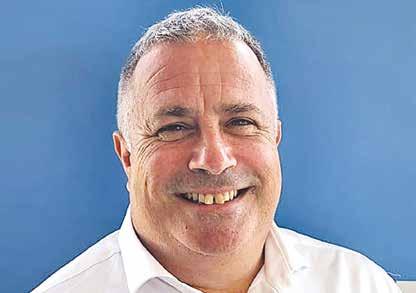
AFIMILK, A global dairy farm management solutions provider, has appointed Justin Miller as the new general manager for New Zealand and Australia.
The company says with an extensive background in sales and business development and a proven leadership track record, Miller will help drive growth and innovation in the region.
Miller brings over 15 years of international and national experience in sales and management, having previously held key leadership roles at Johnston Controls, Datacom, and Gallagher Security.
In his new position, Miller will manage all operations for Afimilk in New Zealand and Australia, focusing on delivering advanced technology and solutions that enable dairy farmers to optimise productivity and sustainability. He will work closely with their accredited dealer network, Headlands, Ace Electrical and Read Industrial, ensuring that Afimilk continues to meet the evolving needs of the dairy
industry.
“The cow monitoring collar market has seen significant growth in recent years,” says Miller.
“I am looking forward to leading the Afimilk teams in New Zealand and Australia during this exciting time for the industry.
“Our solution gives farmers the data to make informed decisions, making the farmer more effective daily basis and paves the way for a more sustainable dairying future.”
Afimilk vice president global business, Jecka Glasman says they are thrilled to welcome Miller to the team.
“With his expertise and passion for the sector, we are confident that he will lead our operations in New Zealand and Australia to new heights, further solidifying our commitment to supporting farmers with innovative solutions.”
Justin will be on-site supporting the Afimilk sales and technical team at the South Island Dairy Event (SIDE) in Timaru in early April.
ing culture within your organisation, is what makes things tick.”
He says it matters because our people are precious and are given an enormous amount of responsibility. In the dairy sector, the ratio of cows per workers and
hectares per worker are growing.
He warned that one of the costs of dairy businesses getting bigger with fewer people is a changing pattern of work injuries. The number of injuries per worker is trending down, but
mainly in minor injuries.
“The injuries that we do have on average are increasing, so they’ve gone from 25 days on average off from work to now being 50 days off from work.
“Health and safety is an outcome of not just
good practises but good culture in your businesses. It always seems like it’s about compliance, but the best health and safety happens in businesses and farms that have good culture.”
Being responsive to the needs of your staff also meant not being afraid of investing in yourself.
“In fact, you are one of the most important critical ingredients for success in your business. Investing in your leadership and your culture is critical.”
Aimed at helping farmers develop their workforce for a more productive business, the event also heard from Canterbury dairy farmers Jeremy Duckmanton and husband-and-wife Kim and Will Grayling, and Waikato agribusiness consultant James Allen.

BAY OF Plenty’s top share farmers Andre and Natalie Meier are no strangers to the New Zealand Dairy Industry Awards winning circle.
Andre was the 2020 Bay of Plenty Dairy Manager of the Year and was also named the national winner, taking home the 2020 National Dairy Manager of the Year trophy.
Last month, Andre and Natalie again tasted success, this time taking out the region’s Share Farmer of the Year category.
Andre believes the awards programme have helped his self-development by pushing him outside his comfort zone and
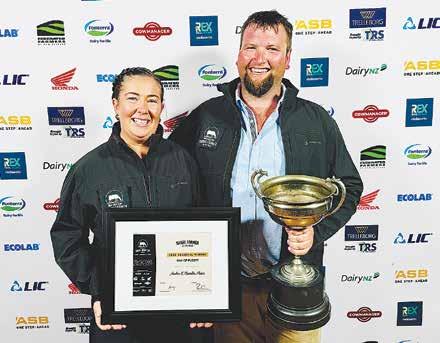
through making connections within the industry. The couple are in a 20% equity partnership with Bruce and Gill Cameron over two proper-
ties at Otamarakau and Otakiri, totalling 267ha and 760 cows. They won
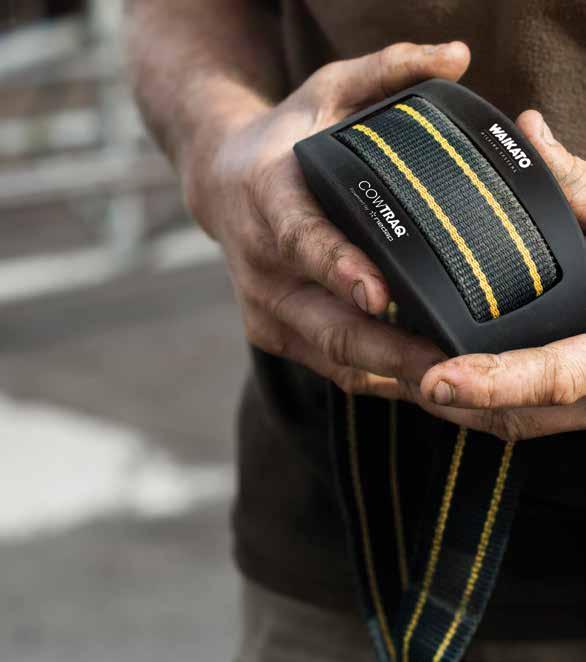

$11,745 in prizes and three merit awards.
Andre and Natalie chose farming as their career as the mix of working with outside with animals and machinery was appealing. “We love being outdoors and physically active, it’s a great lifestyle for a young family.”
“We see technology and innovation in the industry growing in the future,” they say. “We already use a lot on-farm but will continue to grow in this area as we are reaching our full potential and it helps with environmental sustainability.”
The couple would like to see a more consistent milk price with less fluctuation, to help with future budgeting.
The couple cite farming during Covid as one of their biggest challenges. “We had to implement systems to continue farming and keep our staff safe.”
Significant weather events have also given Andre and Natalie challenges to overcome, which they have done by simplifying their farm system to ensure they can ride out any future storms.
“We also changed our system to OAD which has significantly improved our reproduction results.”
Andre (35) and Natalie (33) cite diversification, size of business and a solid infrastructure with shared machinery and resources as strengths of their farming business.
“We are able to share staff and skill sets across our two properties, and business diversity in kiwifruit and quarrying also spreads our business and financial risk.
“We have a herd on one farm which is awesome and a feed pad on the other farm,” they explain. “We also have a great pool of machinery which we share between platforms and we’re able to do jobs such as fertiliser application meaning we don’t need to rely on contractors.”
THE WINNER of the 2025 Bay of Plenty Dairy Manager of the Year category is Thomas Lundman, who won $8,150 and three merit awards is also no stranger to the awards.
Lundman was the 2022 Bay of Plenty Dairy Trainee of the Year and 2022 National Dairy Trainee Runner-up.
The 27-year-old is farm manager on Michael and Linda Mexted’s 135ha Whakatane farm, milking 530 cows.
“I have found that networking with people all over the country and making connections for advice has been super beneficial,” explains Thomas.
“Winning categories has opened doors for me that I never would have imagined and has given me the confidence that I’m good enough to take the next step.”
ALANA FITZPATRICK is the 2025 Bay of Plenty Dairy Trainee of the Year and won $6,120 in prizes and three merit awards.
She was runner-up in the same category in 2024.
“Through the awards programme I’ve begun some very valuable networking and built more confidence in myself and my abilities as a farm assistant.”
The 22-year-old works on David and Lesley Jensen’s 240ha, 700-cow property at Tauranga.
Alana embraces the new technology that is available in the industry and enjoys discovering how it can benefit on-farm systems.
She holds a strong passion for the dairy industry and has completed NZ Certificate in Agriculture Level 3 in Farming Systems, Vehicles, Machinery and Infrastructure and Dairy Farming, and is currently studying towards Dairy Farming Level 4.
Future farming goals include debt increasing their equity shareholding and improve their herd figures to have an efficient OAD herd.
Runners-up in the Bay of Plenty Share Farmer of the Year category were Renee and Benjamin Howard. Renee was the 2019 Manawatū Dairy Manager of the Year.
The couple are in a 9% equity partnership with John and Leanne Howard their 89ha Whakatane farm, milking 233 cows. They won $6,575 in prizes and three merit awards.
Renee and Ben credit the awards programme with helping them gain insights into their business and say the feedback from judges has allowed them to align their goals to ensure they are on the right path to where they want to be.
The couple see themselves at the forefront of the change into sustainable practices that truly
focus on the health of the animal and the land.
“We are already incorporating sustainability practices on-farm and focus more on our animals and land over profit.”
The couple cite their family as a strength of their business. “We all work well together as a team, and we have flexibility in some of our jobs.”
“We have a longstanding business with relatively low debt levels and a focus on future growth, which means there has been a fair amount of capital investment, with room to expand.”
Alex and Shaun Boyce placed third in the Bay of Plenty Share Farmer category and won $3,125 in prizes and two merit awards. The 29-year-olds are contract milking on David and Lesley Jensen’s 250ha Omanawa property milking 700 cows.
FOR MANY urban New Zealanders, stepping onto Pāmu’s Pinta dairy farm near Taupo last month was the first time they had had the chance to experience farm life up close.
More than 200 people registered from as far away as Hamilton, Tauranga and Auckland to join Pāmu people and partners for a rural-urban open farm day to get a behind-the-scenes look at modern dairy farming.
NZ Open Farms is an annual nationwide event designed to reconnect Kiwis with the land, food, and farmers who sustain the country. This year, the team at Pinta, led by farm manager Shane Cooper, welcomed a diverse group of visitors, including many first- and second-generation New
SITUATED NEAR Taupo, Pinta Dairy Unit is home to a team of nine permanent staff who care for 2,150 cows across 877ha effective. Pinta is operated by Pāmu, the brand name for government-owned Landcorp, New Zealand’s largest pastoral farmer.
Pāmu operates 112 farms covering 356,048 hectares and managing over 1.25 million stock units with 630 employees. The state-owned enterprise says it is committed to “enhancing the future of agriculture, returning land under the Treaty of Waitangi settlements, and producing a financial return while focusing on sustainable and responsible farming practices and having regard to the communities”.
Zealand families.
Making the day a success was a team effort, with support from Pāmu farm teams and apprentices, alongside industry partners. Central Transport Ltd fired up the BBQ for sausages, Synlait served up fresh pancakes, CFS set up hayrides, Fonterra FarmSource
handed out flavoured milk and lollies, and VetPlus shared their animal expertise with excited visitors.
The team pulled out all the stops to make the day memorable. Visitors got up close with the animals, feeding calves and watching the cows being milked — a defi-
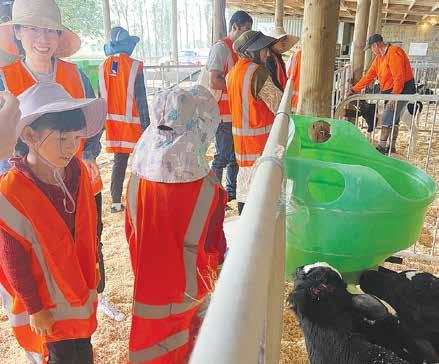
nite highlight. Families were able to try out gumboot throwing and trailer rides, paint baleage, explore the yards, and sit on tractors for photos.
The Pinta team also helped create a memorable hands-on experience. Visitors fed calves, watched cows being milked, took part in gum-
boot throwing, and even hopped on tractors for photos. The experience opened real conversations about where NZ’s food comes from, says
Cooper. “One visitor who milked 150 buffalo back in his old country came today to see how we do milking in comparison,” he says.
“And a local woman with her two boys said they often drive past our farms and were excited to finally see one up close.
“We were really surprised at how unique the day was for some of our visitors. People were asking if it was safe to touch the hay bales, and some questions came up like ‘Where do the cows sleep?’ ‘Where do you feed them?’ and ‘Where do you shower the cows?’”
Cooper adds that Pāmu is proud to be part of Open Farms and to help build connections between rural and urban New Zealand.
see first-hand what HFNZ members’ requirements are,” Donald says.
HOLSTEIN FRIESIAN NZ and Link Livestock have agreed on a strategic partnership to provide HFNZ members with comprehensive services from one of New Zealand’s most wellrespected dairy men.
Dairy farmer and international All Breeds cattle judge Selwyn Donald has been employed by Holstein Friesian NZ in a Traits Other than Production (TOP) inspector and classifier role, with additional youth mentor and judging school convenor responsibilities. His second, complementary role will see him work as a sales agent for Link Livestock.
“Being on the ground means I will
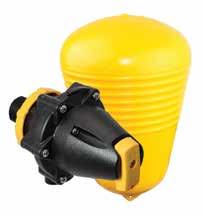
“I have a good understanding of the industry thanks to my vast experience, and I have good insight into what a farmer requires, whether that might be indexed cattle or overseas genetics, show types or commercial animals, or a mixture.”
Holstein Friesian NZ general manager Cherilyn Watson says the strategic partnership was an opportunity for HFNZ to add another offering to the suite of services already available for members.
“It provides an opportunity for members to sell their cattle under the advice and guidance of an experienced agent, with HFNZ receiving a commission for every animal sold,”
she said. “It has long been in the HFNZ Strategic Plan to develop an income stream through cattle sales.”
Link Livestock business manager Lisa Treleaven says the company was excited to be partnering with Holstein Friesian NZ in welcoming Selwyn as part of their team.
“Many people in the farming community will know of Selwyn, with his vast knowledge of cattle and eye for stock that can be
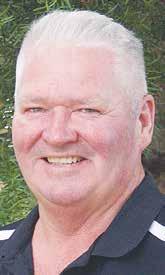
trusted,” she says.
“Whether you’re wanting to have your stock valued or are thinking of selling your herd at auction or in the paddock, Selwyn can help, no matter the breed of stock presented.”
Treleaven says the strategic partnership is of mutual benefit for both organisations.
“We look forward to strengthening our relationship with HFNZ and the Holstein Friesian community, and are excited to
see this partnership grow.”
Donald has judged cattle extensively around the world, including as an Associate Judge at the World Dairy Expo – the only New Zealander to do so.
He also has a particular passion in helping young people who want to show and judge cattle.
“It was exciting to see such a large amount of young people showing cattle this season,” he said.
“I hope that by encouraging them they will continue on the pathway to becoming breed society members, owning their own herds and using the services of the breed society in the future.”
@dairy_news facebook.com/dairynews

• Up to 50mm Inlet
• Flows up to 600L/min
• For Storage Tanks

• Inlets Upto 50mm
• Avoids Starting & Stopping of Pump When Tank is Filling • Ideal for Cattle Troughs • High Flow • Side/Bottom Mount • Detach to Clean
Compact/Robust

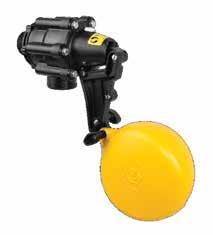
• Easy Access to Valve

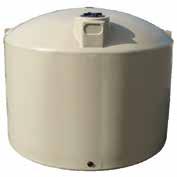
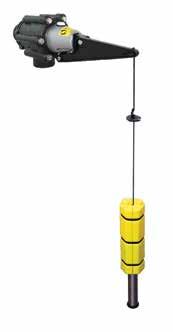

NOTED ECONOMIST and selfpromoter Cameron Bagrie took one look at KPMG’s recently released Financial Institutions Performance Survey on banks and zeroed in one key number that suggest banks are so risk averse in this country that they are probably stifling growth and innovation. That number is 0.08%, the ratio of impaired asset expense to average gross loans and advances. Bagrie says this is incredible considering the economy is supposed to have experienced the worst economic climate since the global financial crisis. “What risk have banks been taking?” he asks. The low impairment charges and lift in banks’ profitability tells a fundamentally different story relative to the economy’s performance. “We are not going to get an appetite to take risk in this economy –which is desperately needed – if the banking sector is not on board taking risk.”
FEDS SOUTHLAND ‘pres’ Jason Herrick and colleagues, who continue the good fight against bureaucratic madness on behalf of farmers, have had another win – for now, at least – getting a court decision granting a ‘stay’ on rules in the Southland Water and Land Plan until changes can be made to section 70 of the RMA by central government, something they clearly signaled after the election. The plan, following earlier court decisions, would have required more than 3000 Southland farmers to apply for an expensive resource consent just to continue farming. “The activist groups who initially brought this case, like Fish & Game and Forest & Bird, should be hanging their heads in shame,” Herrick says. “All they’ve done is stir up a whole lot of angst and uncertainty in our rural communities and I don’t think they’ve taken any accountability for that.”
THE GOOD times felt across the dairy sector weren’t lost at last week’s Beef + Lamb NZ annual meeting.
One B+LNZ levy payer questioned why the organisation was investing with an independent wealth management and investment company.
He suggested that it could be better invested in dairy farms in NZ. Dairy farmers are in line for a record $10/kgMS milk price this season and some analysts believe another $10 could also be on the cards next season.
As B+LNZ chair remarked the suggestion would have been music to the ears of DairyNZ chair Tracy Brown who was also in attendance.
IS IT the beginning of the end for Greenpeace?
The environment lobby has been stung by a US$660m fine in the US for its role in one of the largest anti-fossil fuel protests in US history.
Texas-based Energy Transfer also accused Greenpeace of trespass, nuisance and civil conspiracy over the demonstrations nearly a decade ago against the Dakota Access Pipeline.
The lawsuit, filed in state court, argued that Greenpeace was behind an “unlawful and violent scheme to cause financial harm to Energy Transfer”.
Greenpeace, which vowed to appeal, said last month it could be forced into bankruptcy because of the case, ending over 50 years of activism.
FARMERS NATIONWIDE will be rubbing their hands with glee at the latest news from the Government about the RMA reforms. It seems that at last the Government has listened to the rural voice and acted accordingly. Talk of a focus on property rights will be dear to many farmers’ hearts.
Over the years there has been a lack of consistency around the multiplicity of rules that affect farmers and rural communities. Certain rules will apply in one region and the next-door regional council will have a different set of conditions. At the same time central governments failed to put their foot down and demand that common sense prevail. This loose approach has allowed councils to act in ways that impede rather than enable good farming practices.
The overall poor performance by regional councils has now come at a cost to them.
Under the new RMA, their role has been usurped by central government who will now set national standards which councils must adhere to. That will cut out the crazy stuff that has gone on for years. Also gone are the controversial regional policy statements which again were a source of angst for farmers and a cost to ratepayers.
The new RMA reforms are a victory for rural New Zealand over the rule-ridden Wellington bureaucracy and some of their mates in local government. We know that farmers had direct input and their input was sensible and pragmatic. The new RMA is not about giving farmers a free hand to act recklessly because there will still be laws and punitive measures to stop those who think they are above the law.
If regional councils cry foul about these latest moves, then they just need to look in the nearest mirror because they have brought these changes upon themselves.
The same applies to Wellington bureaucrats who will now have to do a major u-turn to deliver this Government’s RMA.
Head Office: Lower Ground Floor, 29 Northcroft St, Takapuna, Auckland 0622
Phone 09-307 0399.
: davef@ruralnews.co.nz
: www.ruralnews.co.nz
: subsrndn@ruralnews.co.nz
Publisher: Brian Hight Ph 09-307 0399
General Manager: Adam Fricker Ph 021-842 226
Editor: Sudesh Kissun Ph 021-963 177
Machinery Editor: Mark Daniel Ph 021-906 723 markd@ruralnews.co.nz
Reporters: Peter Burke Ph 021-224 2184 peterb@ruralnews.co.nz
Subscriptions: Julie Beech Ph 021-190 3144
Production: Dave Ferguson Ph 027-272 5372
Becky Williams Ph 021-100 4831 Digital Strategist: Jessica Marshall Ph 021 0232 6446
AUCKLAND SALES CONTACT: Stephen Pollard Ph 021-963 166 stephenp@ruralnews.co.nz
WAIKATO & WELLINGTON SALES CONTACT: Lisa Wise Ph 027-369 9218 lisaw@ruralnews.co.nz
SOUTH ISLAND SALES REPRESENTATIVE: Kaye Sutherland Ph 021-221 1994 kayes@ruralnews.co.nz
LAST SUMMER, a couple out exercising their dog took their usual walk around a local public reserve in Pukekohe.
As they passed a stormwater pond, something caught their eye: a vibrant green plant with purple flowers, floating on the water’s surface. It looked healthy, almost ornamental.
Only a few months later, that seemingly innocent plant had exploded across threequarters of the water’s surface, forming an impenetrable mat.
Water hyacinth (Pontederia crassipes) is a
serious water weed and is infamous for its invasive, fast-growing nature. Given the right conditions, a single small infestation can double in size in just one to two weeks.
At first glance, water hyacinth may appear too pretty to be a problem with its stunning lilaccoloured flowers from mid-summer to early autumn, each stalk boasting up to 20 delicate blooms. But beneath its beauty lurks an ecological nightmare.
Water hyacinth doesn’t just spread outward - it grows downward, with roots extending up to a metre deep. It forms dense mats that can reduce
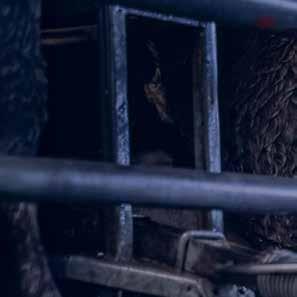

water quality, change water flows and increase sediment, crowding out native aquatic plants and animals, altering ecosystems, destroying habitats, and blocking irrigation systems.
It is also an expert at long-term survival. Each water hyacinth flower, once fertilised, produces hundreds of tiny seeds that sink to the bottom of waterways where they can remain viable for
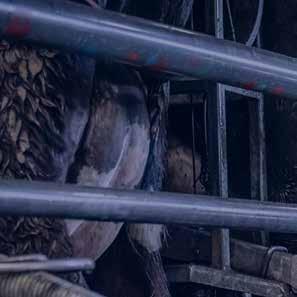
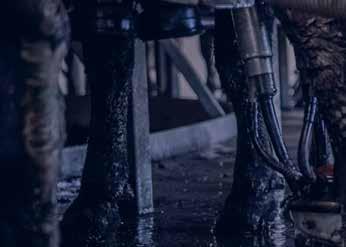
three decades, waiting for the perfect conditions to sprout.
Water hyacinth is an unwanted organism in New Zealand, meaning it is illegal to sell, grow, display or distribute it. It is
also a notifiable organism - so if you do spot it, you must report it immediately to Biosecurity New Zealand.
Thanks to the sharp eyes of the Pukekohe couple, the outbreak in their local park was identified before it could spread further. Biosecurity officers were able to remove the plants, and the pond will be monitored for the next 30 years.
What can you do?
• Be on the lookout: Water hyacinth has round, glossy green leaves and distinctive lilac flowers.
• Help spread awareness: This invasive water weed may seem like a
good choice for aquariums or garden ponds, so many people don’t realize they are illegal and harmful.
• Never release aquatic plants into the wild: Many invasive species start as discarded garden or pond plants. Biosecurity New Zealand can dispose of these invasives safely.
New Zealand’s biosecurity depends on all of us.
If you think you’ve found water hyacinth, report it to Biosecurity New Zealand at 0800 80 99 66 or report.mpi. govt.nz/
• John Walsh is director Pest Management at Biosecurity New Zealand















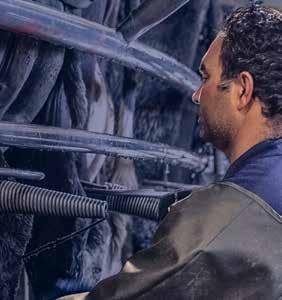
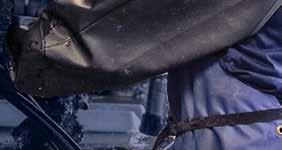








NEW ZEALAND farmers
know that pastoral fortunes can shift rapidly once summer’s extreme dryness gives way to cooler, wetter autumn conditions.
While the moisture offers welcome relief for parched paddocks, it also presents fresh challenges—chiefly, how to rebuild pasture covers for winter without compromising sward health.
By carefully setting grazing rounds to align with slowing autumn growth, you can balance animal requirements, preserve pasture quality, and enter winter on a strong footing.
Transition out of dry conditions
After a long, dry summer, many North and South Island farms face depleted pasture covers. Because plants struggle to replenish energy reserves under drought stress, stock often graze paddocks lower than recommended, weakening pasture root systems.
BY PACING your grazing rounds to match autumn growth rates, maintaining consistent post-grazing residuals, and monitoring feed budgets, you can steadily build a valuable feed wedge.
This wedge forms an insurance buffer that carries your stock through autumn’s variable weather and into winter’s leaner growth period. Through careful planning, stock selection, and selective supplementary feeding, you’ll finish autumn with well-managed swards and animals in suitable body condition.
It’s all about taking a measured approach and using the best information available— both your hands-on paddock observations and decision-support tools like Pasture. io. By doing so, you’ll transform a once-barren late-summer landscape into a healthy, resilient feed base for winter. The payoff? Fewer feed shortages, healthier soils, and a proactive, profitable start to the following spring.
As autumn rains return, the temptation can be to graze new green growth too quickly. Yet giving stressed paddocks enough recovery time— targeting two to three new leaves on ryegrass tillers before returning stock—lets plants restore vigour and ensures future growth isn’t curtailed. Where feasible, ease the pressure on recovering paddocks by adjust-
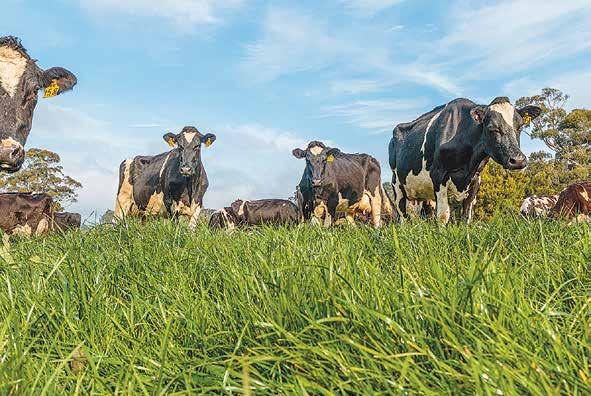
ing stocking rates, using sacrifice areas, or feeding silage and hay. This approach allows you to avoid “chasing” sparse regrowth. Once paddocks have built enough leaf area, they will respond more robustly to autumn’s milder temperatures and improved soil moisture.
Match rotations to growth
Managing rotation length is essential as autumn days shorten, and pasture growth tapers off. A well-planned rotation ensures each paddock gets adequate rest between grazings, enabling plants to reach the 2.5- or 3-leaf stage.
Grazing too early—at only one or two new leaves—slashes total production because plants haven’t recouped their carbohydrate reserves. Conversely, waiting well beyond three leaves can lead to declining feed quality.
As a rule of thumb, many dairy and sheep farmers lengthen the autumn rotation from around 25–30 days in early autumn to 40–60 days by late autumn. That deliberate slowdown allows surplus feed to accumulate, creating a feed wedge (higher average pasture cover) that will sustain stock if winter growth drops
below demand. Prep for winter: residuals and soil protection
The next step is to set yourself up for winter by leaving consistent, appropriate post-grazing residuals—often in the 1,500 kg DM/ha range (around 3.5–4 cm). Grazing too low depletes photosynthetic capacity, slowing regrowth. Moderately grazed swards maintain enough leaf area to keep growing until temperatures decline sharply. In regions prone to pugging, keep an eye on soil conditions once autumn rains start. Standing animals off paddocks during heavy downpours
or using back-fencing can prevent serious soil damage. Preserving pasture structure through autumn means less yield loss heading into winter.
Farmers should also create or update a feed budget for autumn and early winter. Predicting how much grass you can realistically grow—and when—helps you decide if extra supplements or a tighter cull strategy are necessary. If you come into winter with too little cover, animals may face feed shortages during cold snaps, and you risk overgrazing.
Leveraging data
One of the most effective ways to track pas-
ture recovery and plan rotations in real-time is through advanced decision-support technology. Platforms like Pasture.io combine satellite imagery, farm management activities, and spatial datasets using machine learning to automatically measure pasture covers and growth rates, eliminating guesswork from grazing decisions.
These tools provide paddock-by-paddock updates, highlighting which areas are ready for grazing at the optimal leaf stage. They also assist in timing fertiliser applications to match environmental conditions, maximising pasture growth.
Importantly, datadriven insights from these platforms enable proactive management strategies. For example, if an abrupt growth dip occurs due to unexpected weather, rotations can be quickly adjusted, or supplement feeding increased. Conversely, when pasture growth exceeds expectations, technology can identify emerging surpluses, allowing timely silage harvesting or allocation of additional grazing days to maintain pasture quality.
• Bronnie Grieve is cofounder of Pasture.io, a Tasmania-based pasture management platform.




CARTERTON’S AWAK-
ARE Farm has long stood as a place where family, tradition and innovation intersect.
Kevin and Alison Hull have been the heart and soul of this 99ha dairy operation since 1985, but their connection to the land runs much deeper than that—reaching back nearly a century when Alison’s grandfather first started farming the property in 1927.
Today, the couple peak milk a 200-strong herd of Holstein Friesian cows on an 80ha effective milking platform, a testament to both their commitment to the breed and the environment they nurture.
The farm’s history is rich with transformation and adaptation. Alison’s father, who preferred Jersey cattle, owned the property until Kevin and Alison purchased it from him in 1999, after 50:50 sharemilking for several years.
Kevin quickly saw the potential for Holstein Friesians, and they became the cornerstone of the Hull’s operation.
Awakare Farm isn’t just a business—it’s a family affair. Kevin, Alison and their daughter Jude work together during the busiest times, with their son Johnny, who previously worked on the farm, now contract milking on another property. Their other daughter, Abby, is also involved in farm operations.
Owner: Kevin & Alison Hull

Location: Carterton, Wairarapa Farm size: 99ha (80ha milking platform)
The next generation is already stepping up to carry the torch, with 12-year-old Jimmy, one of Kevin and Alison’s eight grandchildren, taking an active role on the farm.
Cows: 200 registered Holstein Friesians
Production: 80,000kgMS
Stud name: Awakare
Jimmy’s passion for farming has blossomed, a sure sign that the Hull family’s legacy is secure.
“When we see three generations in the cow-
shed, remembering the farm has been in the family for 100 years is amazing,” Jude says.
The Hulls operate a pasture-based system 3 farm, utilising silage and supplementary feed such as turnip, chic-
THE FAMILY’S careful selection of bulls each season plays a key role in maintaining the herd’s desirable traits.
“Production is important, but not the be-all and end-all,” Abby Hull says.
Fertility and temperament are just as vital, with the family selecting for cows that are neither too large nor too difficult to manage.
“We’re not breeding massive Holstein Friesians,” Abby says. “If they get too heavy, we will get pugging damage on our soils and not be able to run the stocking rate we want to suit our pasture growth curve. We want a practical animal that can get back in calf quickly and has good conversion efficiency.”
The Hulls’ dedication to the land extends beyond their herd. Recognised for their commitment to sustainability, Kevin, Alison, and Johnny were awarded the Ballance Agri-Nutrients Soil Management Award, the DairyNZ Sustainability and Stewardship Award and the Greater Wellington Regional Council Award in 2022.
Their conservation efforts, particularly in preserving Awakare’s waterways, have enhanced the property’s biodiversity. By planting native trees and protecting wetlands, the Hulls have created a haven for native birds and fish, further enriching the farm’s ecosystem.
“We want to protect the farm for the future generations coming through,” Abby explains.
Alison has long been a champion of planting waterways, raising seedlings in her nursery to later transplant on the farm. The Hulls’ low application of nitrogen, coupled with their ability to spread effluent over a large area, has helped
reduce nitrogen leaching and improved soil health. They also employ minimum tillage techniques and direct drilling, further reducing their environmental footprint.
Jude’s husband Willy, the principal of a local school, has even brought stu dents to the farm to help with planting efforts, giving them hands-on experience in environmental conservation.
“It’s always been a lovely natural habitat, but now there are even more birds, and Mum regularly feeds the pet eels in the creek,” Abby says.
ory and kale to maintain are runoff down the road their herd’s performance.
at four-days-old or raised by Abby until 100kg and then sold.
“That’s another reason we like the Holstein Friesian breed – there is a good market for Holstein Friesian calves, so there is no waste,” Jude says. They carefully breed for fertility and production, ensuring that highproducing cows that are easy to manage remain at the heart of the operation.
Holstein Friesians are a breed that Kevin and Alison have stuck with for good reason.
Known for their sturdy
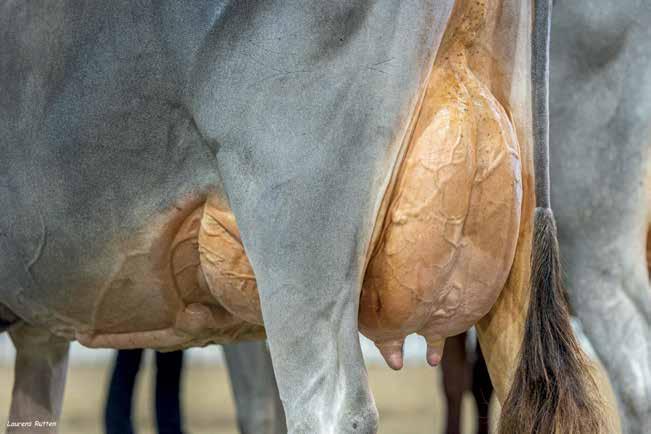

Custom formulation to fit the needs of your herd
Class leading probiotic strength
Multiple internationally researched strains
Live yeast and yeast metabolite options
With the next generation already showing a deep connection to the farm, the future of Awakare Farm looks bright. Jimmy in particular is following in his family’s footsteps.
His interest in showing cows began with his school pet day and since then, he’s taken three calves to pet days, with many first placings in care and condition and leading.
At a local A&P Show he took home first prize in leading, dairy type and care and condition. And the trophy he received was especially meaningful to Jimmy, as it bore the names of Kevin and his brothers from their own showing days.
As the Hull family celebrates a century on their farm, they continue to look forward to what the future holds. While expansion is always a possibility, they remain committed to running a sustainable, efficient operation that allows the entire family to be involved.
“I like the idea that it is a place where the kids can come and learn,” Abby says. “On a small farm, you have to do all the tasks, and it’s a good place to gain a strong farming knowledge base.”
Affordable and efficient probiotic solutions
NIL milk withhold
Options to support: Immune system support and mastitis control
Growth
Digestive efficiency with potential reduced feed costs
Milk production


I PROVED I COULD SUCCESSFULLY TREAT HIGH CELL COUNT COWS IN THE AUTUMN - THIS GAVE ME CONFIDENCE TO TREAT SPRINGERS TO PREVENT CALVING MASTITIS

SUCCESS IN calf rearing is often measured by minimising health issues, reducing mortality rates, and achieving high growth rates.
According to Probiotic Revolution’s Matt Collier, probiotics have proven to be a game-changer in large-scale operations where disease challenges are significant.
Collier has long advocated for the use of probiotics alongside higher milk feeding rates.
“This approach prevents nutritional scours, enhances digestion, and boosts intake of meal, hay, and grass. The result is faster growth, with a survey showing calves reaching target weaning weights 11 days earlier,” he explains.
Farmers consistently report notable improvements in calf health, with cleaner tails and shinier coats. Collier notes that one experienced farmer, who has reared 50 calves annually for 30 years, noted that for the first
time, they had no sick calves or losses.
Health improvements are even more significant in large-scale operations, especially when bull calves come from multiple sources, where good colostrum intake cannot always be guaranteed. In such cases, rotavirus and cryptosporidium can have severe effects.
Kapuka dairy farmers Brooke and Blair McKenzie rear 800 heifer and bull calves annually.
Last spring, they experienced only two unexplained calf losses after they left their calf rearing shed.
They vaccinate half their cows for rotavirus, using their gold colostrum with a brix reading of over 22 to start the calves. However, with such a large rearing operation their calves still have some rotavirus challenges every year and some diarrhoea occurs after disbudding.
They primarily manage these health issues by

strengthening immunity through daily feeding of Calf Xtreme. When disease strikes, they increase the Calf Xtreme dosage three to four times, administer BioRescue probiotic paste, and provide an electrolyte drink.
They will also use an anti-inflammatory and a mild antibiotic if needed.
Brooke emphasises the role of nutrition in these results: “We now feed 7 to 8 litres of milk once a day by day 10, instead of 3 litres twice daily. This
change has significantly increased hay consumption by 3 to 4 weeks of age, and the daily weight gains up to December are around 1kg/day. With faster growth and improved immunity from Calf Xtreme, our calves
are better equipped to handle rotavirus.”
Successful large-scale calf rearing operations must prioritise feeding management and facility setup to provide the best possible environment to minimise disease and
WITH A higher forecast payout, falling interest rates, and renewed confidence in the dairy industry, farmers can move beyond day-to-day survival and plan how they can improve their herd long term.
That was the focus of CRV’s Better Herd on-farm events, held at eight locations across New Zealand last month. Now in their third year, these events bring together local farmers and CRV experts to share practical insights and advice on breeding more productive, efficient, and sustainable herds.
“With a stronger payout forecast and better mating results this season, farmers have more flexibility to make strategic breeding decisions,” says CRV managing director James Smallwood.
“Now is the time to focus on where replacements are coming from, improve herd fertility, and use the right genetics to strengthen herd performance and capitalise on the record payout.” Helping farmers access the right tools
To build a stronger herd, farmers need the right tools - but cost can be a challenge. That’s why CRV is work-

ing with Fonterra through its Cooperative Difference programme to make herd testing and genetic tools like DNA testing more affordable and accessible, helping farmers improve efficiency and reduce emissions.
“Despite the benefits, for many farmers, the cost of these types of tools and services can be a barrier to making improvements,” says Smallwood.
“By working together across the industry, we can give farmers access
to the right solutions and support to help them build more productive, lower-emission herds faster. For those committed to the Co-operative Difference, this is a great opportunity to strengthen their herd with funding support from Fonterra.”
The benefits of better herd management are clear. CRV myHERD Testing data shows that the top 25% of cows in every herd produce, on average, 165 kgMS more per season than the bottom 25%, while Fonterra
data highlights that these top cows are over 16% more methane efficient per kgMS than the bottom 25%.
Strong mating results set farmers up for success
The timing for herd improvement couldn’t be better. Thanks to fine weather and good feed levels, this season has provided some of the best mating conditions in years.
Early data from CRV showed a 4.3% increase in non-return rates compared to last year, with cows mated
losses. Despite this, maintaining sickness below 8% and mortality under 4% for spring-born calves is challenging.
Top Notch Calves, a rearing operation near Okoroire that raises up to 7,000 calves annually, has seen remarkable results since implementing Calf Xtreme, Collier says.
Over half of their calves are reared in the spring, and for the whole year, they recorded just 212 calves in sick pens and only eight deaths.
Chris and Karen Horan, Top Notch Calves, ask all their suppliers to use this probiotic before calves arrive at their rearing facility.
Probiotic Revolution is committed to maintaining these positive outcomes by strengthening its product formulations without increasing costs, says Collier.
“There are still many farmers who can benefit from our products to raise stronger, healthier calves.”
using sexed semen achieving an 8.4% year-on-year improvement.
“The data shows cows were cycling well and well-managed throughout mating,” says Smallwood.
“Even in Southland, where conditions were more challenging, farmers took quick action with OAD milking and careful management, leading to better-than-expected submission rates.”
These positive results set the stage for next season, as strong six-week incalf rates mean more compact calving, better recovery time, and earlier cycling and conception rates. With more farmers using sexed semen, the top 20% of cows are being selected for replacements, while conventional semen and beef genetics are being used more strategically across the herd.
“With the right tools and support, farmers can build a herd that’s not only more productive and fertile but also better prepared for the future,” he says.
“That’s exactly what our Better Herd events focused on – expert advice, practical tools, and proven solutions farmers can apply on their own farms.”
WITH MANY European manufacturers releasing mechanical weeding systems to counter the backlash around the use and possible banning of agrochemicals, Amazone has added a new model to its Venterra mechanical hoe range.
Joining the existing 2K Series that offers working widths from 1-12 metres, the new 1K lightweight all-rounder is available in working widths up to 4.2m.
Designed for smaller operations and tractors from 60hp, the modular design allows the rearmounted hoe to be equipped with various parallelograms for row widths from 16cm to

90cm. Numerous tools can also be fitted, and the patented RapidoClip quick-change system
allows blades to be changed without tools, while an optional kit also allows front mounting.
Easing the load on the operator, two row guidance options both control the side-shifting
frame. The Horus camera system recognises the crop based on its position or, in 3D mode, on the
height differences, while recognition can also be provided by colour selection.
No manual adjustments are needed with the in-house developed SmartVision camera system due to its automatic slope correction and the option of use with a row sensor.
The Venterra 1K can also be used with various Amazone machines to combine hoeing with other tasks, like the FTender front hopper that works in conjunction with a distribution head on the hoe, or the RowSpray band sprayer that can be used with the same front hopper. Other details include a GPS-Switch for automatic part-width section control, which raises and lowers the hoeing units hydraulically and individually.
@dairy_news
facebook.com/dairynews
MASSEY FERGUSON has announced the completion of the Massey Ferguson Agrispace, a new 2,800m² customer experience centre, located within the MF Campus in Beauvais, France.
The hospitality destination, said to be more than a showroom or museum, offers MF customers, dealers, business partners, students and employees, a wide range of meeting rooms, an auditorium, product and
services exhibits, a merchandise shop, a restaurant and a museum depicting the brand’s 175+ years of Born to Farm experience.
To make a visit unique, Agrispace features state-of-the-art physical and interactive exhibits that allow visitors to explore the global people, places and products making Massey Ferguson one of the best-known brands across the globe. Farmers can also couple their visits with dealer-
& Wellington Lisa Wise Ph 027-369 9218
Christchurch Kaye Sutherland Ph 021-221 1994
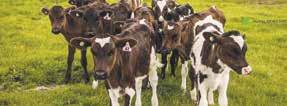
arranged guided tours of Beauvais’ manufacturing facility, to see tractors being built, as well as hands-on experience, courtesy of an on-site test track.
The new facility at Beauvais, dubbed the Home of Massey Ferguson, is strategically located with good connections to motorways and the airports of Paris Charles de Gaulle and Paris Beauvais. Expecting to receive up to 20,000 visitors a year by
2026, from June 2025, Agrispace will be accessible for free to any visitors willing to come at any time, during opening hours, with full access to the product exhibits, museum, merchandise shop and restaurant at lunch time. Factory tours will only be available for groups of visitors under registration with their local dealers.
“We are incredibly proud and excited to announce the completion of the first phase of Massey
Ferguson’s Agrispace,” said Jérôme Aubrion, director marketing Massey Ferguson Europe & Middle East. “The exhibits highlight our commitment to helping farmers tackle their toughest jobs.
“The entire line of products and services we bring to farmers can be found under one roof, at a location where it all began for us in Beauvais back in 1960. Here, the past and our future converge beautifully.”
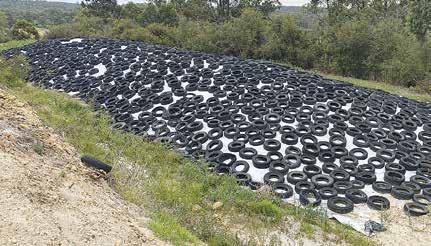

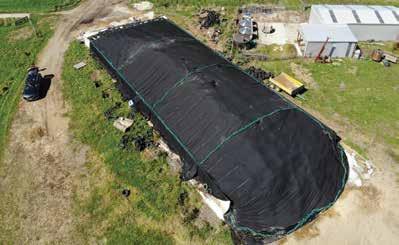


smaXtec’s unique bolus technology helps detect potential diseases early, enabling preventive action to improve health and reproduction outcomes.
smaXtec customer
Hayden Lawrence
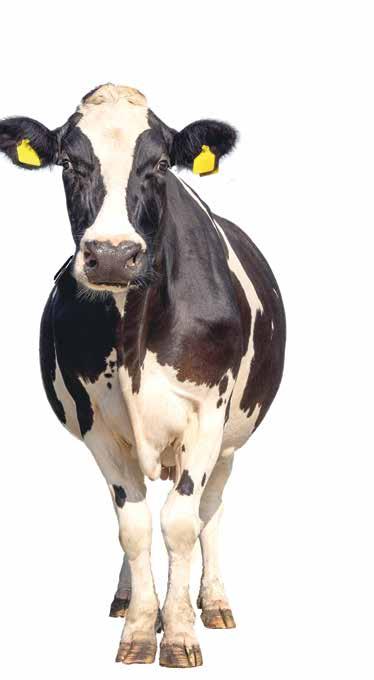
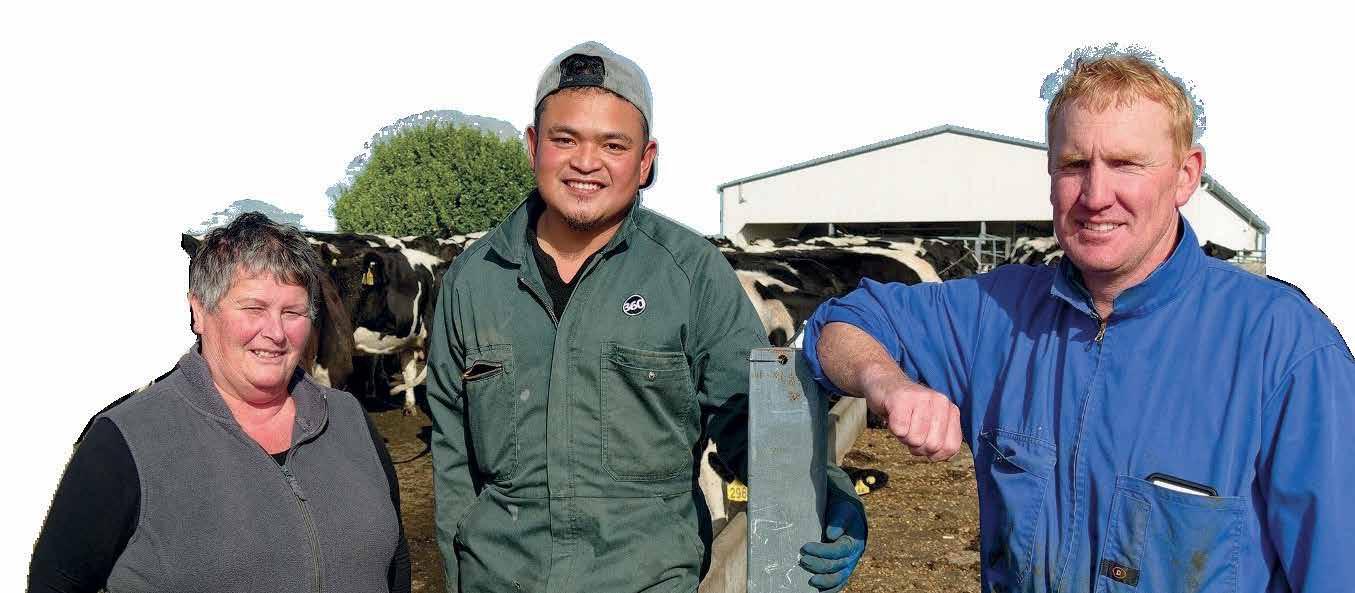
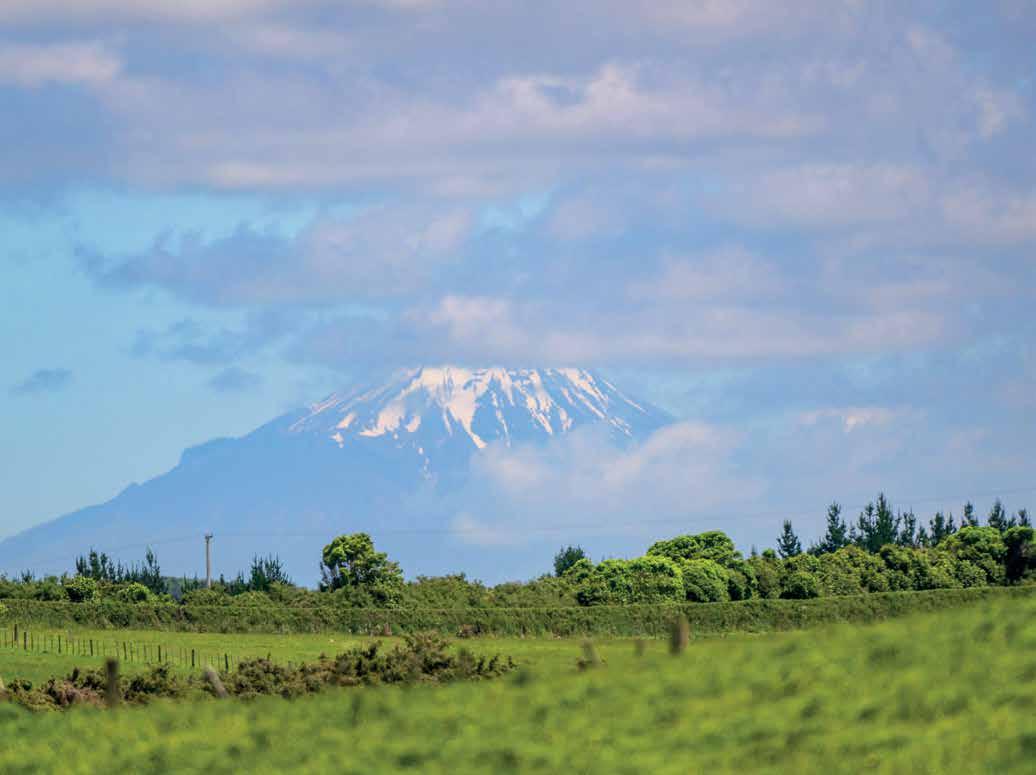
Unlike traditional monitoring systems, smaXtec provides accurate insights from within your cow. A bolus in the reticulum collects data on inner body temperature, drinking cycles, water intake, rumination, and activity, sending actionable alerts to your smartphone or PC.

This data helps detect potential diseases before visible symptoms appear, enabling early intervention, reducing treatment costs, maintaining stable milk yields, and boosting profitability. With smaXtec you can also enhance heat detection, boost reproduction rates and optimise the calving process.
smaXtec has already made a difference for many dairy farmers. Hayden Lawrence, who runs a 430-cow farm in Taranaki, reports:
“Using smaXtec has improved heat detection, reduced mastitis cases by 64%, and cut costs by 56%. It also helped manage calving, calf health, and fresh calvers. We spend five minutes reviewing the data trends for heat, sickness, and health before each milking, saving us time and becoming a key part of our daily routine.”
GOT CURIOUS? REACH OUT TO:
Jeff Hill
Sales Country Manager jeff.hill@smaXtec.com
+64 210 38 57 03
